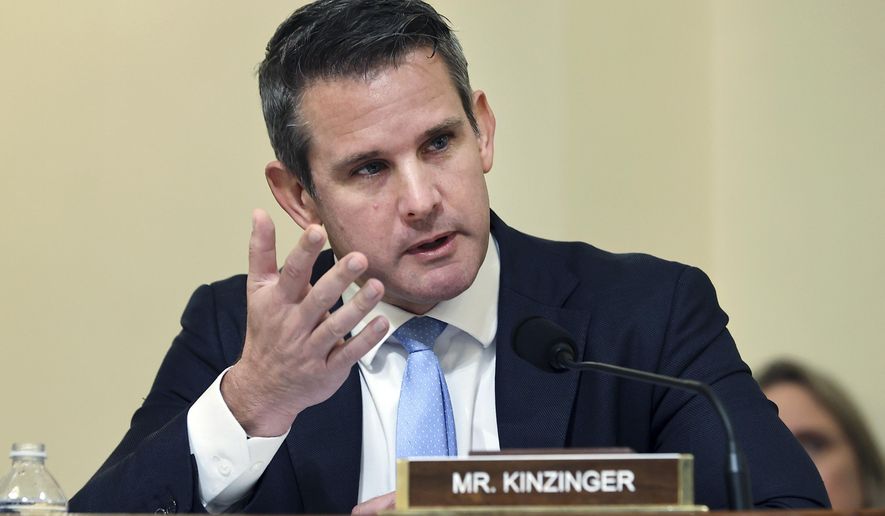Rep. Adam Kinzinger on Sunday said it is not too soon for the U.S. to begin considering the need to eventually use military force in Ukraine against Russia.
The Illinois Republican compared the current situation in Ukraine to pre-World War II and said while the U.S. should continue to work to contain the ongoing war, it should also be prepared to respond in the event of a Russian escalation.
“If Vladimir Putin wants to escalate with the West, he will,” Mr. Kinzinger told CBS’s “Face the Nation.” “It’s easy for him to do it. And I think right now what we’re doing with supply and with lend-lease, with the financing is right.”
“You know … prior to World War II, there were moments nobody ever wanted to get involved and eventually came to realize they had to,” he said. “I hope we don’t get to that point here, but we should be ready if we do.”
Mr. Kinzinger was asked to respond to previous comments from Sen. Tim Kaine, Virginia Democrat, in which he said it was “premature” to begin discussing the use of U.S. military force in the conflict.
Mr. Kinzinger said that while he did not think “we need to be using force in Ukraine right now,” he has introduced an Authorization for the Use of Military Force (AUMF) to give the president “congressional leverage” to deploy the U.S. military “if WMDs, nuclear, biological or chemical are used in Ukraine.”
SEE ALSO: Sen. Robert Menendez pledges action for Ukraine as lawmakers take up Biden aid package
“[It] doesn’t compel the president to do it. It just says if it is used, he has that leverage,” he said. “It gives him, you know, a better flexibility, but also it is a deterrent to Vladimir Putin.”
Mr. Putin has repeatedly warned the U.S. and other Western countries against aiding Ukraine and has accused the U.S. and European leaders of waging a proxy war in Ukraine after Defense Secretary Lloyd Austin stated that a key U.S. goal in arming Ukraine is to “weaken” Russia.
Lawmakers on both sides of the aisle have rallied around Ukraine, and have committed to approving $33 billion in additional Ukraine aid, $20 billion in security assistance, $8.5 billion in economic assistance, and $3 billion in humanitarian assistance.
Mr. Kaine said the right strategy is to “flood the zone with military and humanitarian aid.”
“Right now, the status quo is we are providing massive amounts of aid to Ukraine, both the U.S. and NATO allies and others,” he said. “If there were to be an invasion of a NATO country, a kinetic or even a cyberattack, or if there were to be use of chemical or nuclear weapons in Ukraine, that would change the equation.”
• Joseph Clark can be reached at jclark@washingtontimes.com.




Please read our comment policy before commenting.